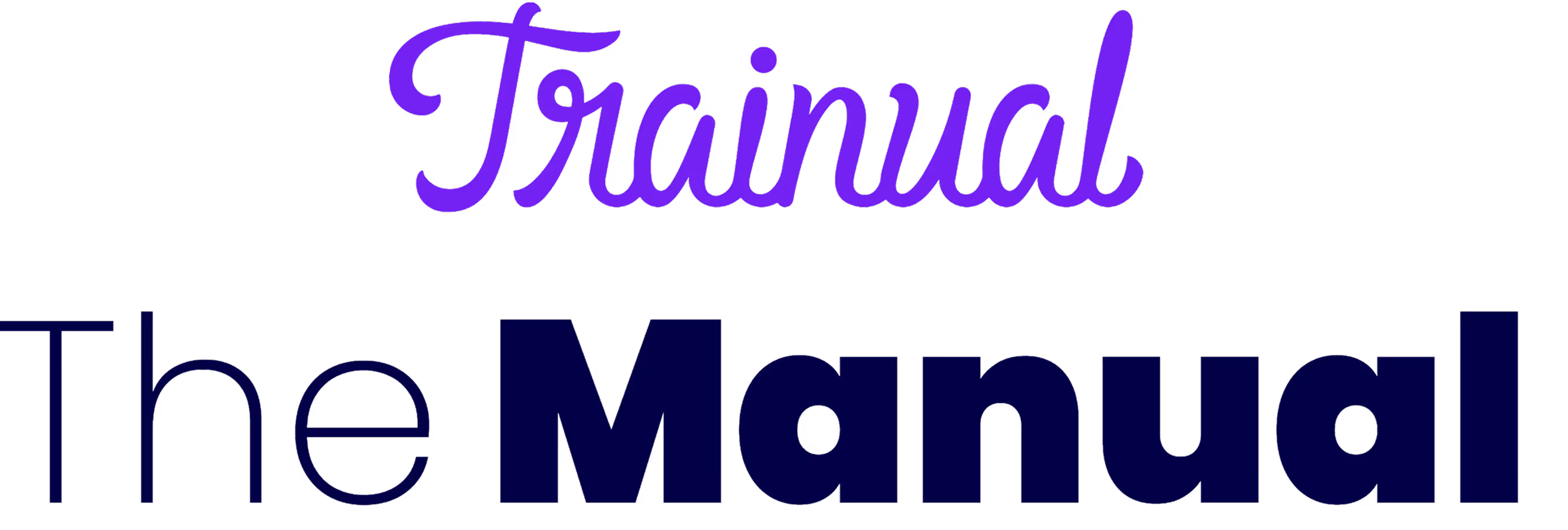Every biz needs an origin story. Here’s how to write yours.
June 28, 2023
Average cost of employee turnover because of poor training and lack of career development: one to two times an employee’s annual salary.
ROI from onboarding, training, and retaining the right employee who delivers great work, contributes to a strong work culture, and is an overall awesome person: priceless.
Hot off the SMB press this week:
- The importance of actually documenting your company story.
- Templates for project management processes and roles.
- How to write a founder story that will engage your employees.
- Why it’s time to invest in project management at your SMB.
HOW TO BUILD A BUSINESS PLAYBOOK
Company story: Why you need one in your playbook
“I slipped on the toilet, hit my head on the sink, and it just came to me!” That might be how Doc came up with the flux capacitor, but that’s probably not the beginning of your business story. And it surely doesn’t answer your employees’ burning questions: “Why this? Why now? And why me?”
Most people can work anywhere these days, so your company story is the way to lock down new hire buy-in and convince applicants that your business is where they want to work. When you tell your story, employees and applicants gain a better understanding of what makes you unique, what sets you apart from competitors, and the foundation for your culture and environment.

According to founder of FUBU and star of Shark Tank, Daymond John, the story behind your business is “everything.” Lucky for you, chapter 4 in the “How To Build a Business Playbook” masterclass helps you craft your unique company story — what it really does, why it exists, where it has been, and where it's going.
Get ready to learn the storytelling skills that help you foster a confident, passionate, and connected team that’s excited to contribute to what you’re building.
👉 Access the full masterclass now.
STARTER PACK
Template(s) of the week: Project Management Process and Project Manager Role

Team whisperer. Task tamer. Risk wrangler. Celebrator-in-chief. If these traits make you think of a certain employee, chances are good they’re a project manager. Otherwise known as the all-star that makes sure your projects run oh-so-smoothly. Even when sh*t starts to hit the fan (and oh, does it hit the fan).
But your project managers need to be equipped with the right tools to become the bridge between different teams and moving pieces, ensure deliverables meet the highest quality standards, and continually optimize project delivery. And the only way to get the ball rolling is to implement consistent processes and clearly outline expectations for project management.
👉 First, head to our project manager role and responsibilities template. When you add these to Trainual, your project managers (and your other team members) will gain a better understanding of their expectations, what they’re ultimately in charge of, and how they’ll work with their peers.
👉 Next, be sure to give ‘em the blueprint to managing the chaos with our Project Management Process template, which covers everything they need to know to successfully execute a project from start to finish. All it needs is your personal touch and it’s ready to share with your whole team.
Want more templates to help you build your business playbook? Check out our entire template archive of free, multimedia-enhanced, and customizable policy, process, and role starters. New to Trainual? Try for free.
ORIGIN STORY
Company story: How to write one that will motivate your team

Everyone loves an origin story.
There’s a reason almost every single Batman and Spider-Man movie starts with their backstories (and you gotta love that classic line). They provide necessary context that establishes how these superheroes ended up on the path to greatness — and why we should root for them in the first place.
That same necessity applies to your business (that’s why there’s a whole chapter dedicated to that idea in “How To Build a Business Playbook”).
Not convinced? Let’s dive into the benefits.
A founder story lets your employees know that your company isn't just policies, job descriptions, and mission statements — it's a group of real people working together and relying on one another to get the job done.
With an effective story, you can pique interest and engage people with your workplace culture even before the actual hire is made. The story you tell should make applicants feel empowered and honored to work for your organization and see it as more than just a source of income.
With that human essence, you cultivate trust — leading to higher job belonging, better retention, and improved job performance.
But how do you write a compelling story when your origins are “boring?”
“I had an idea, I started a business, I now make money” — of course your company story sounds boring when you put it like that!
Every story has a hero who overcomes adversity, and your company story is the same. Your company was founded with a purpose, and that purpose probably wasn’t focused solely on making money. Did you follow a calling to right a wrong, fill a gap, or be of greater service? (If your answer is “yes,” then your company story is off to a great start!)
Presentation also matters. Get creative — share your company story with a special blog, a Twitter thread, or even some video content. (Visual and audio triggers play an influential role in how we feel, therefore video content is an excellent way to elicit emotion.)
👉 Find more tips for writing your company story.
MAKING MOVES
How to invest in project management at your biz
Imagine a company driven by a strong desire to flourish, expand, and foster a culture of continuous improvement. Sounds like a recipe for scalable success, right? Not quite.
Desire to grow and innovate isn’t enough — what you really need to scale an organization is project management.
What’s project management?
It’s the art of organizing people, tasks, and resources to achieve specific goals — that cohesive force that binds all growth initiatives together. Without it, projects can feel like constructing a house without a blueprint or embarking on a journey without a map — while progress may occur, you’re more likely to become disoriented, get lost, and squander valuable resources.
Project management helps streamline processes, implement efficient strategies, and manage high-stakes projects that propel businesses forward — leading to a well-oiled machine where each department seamlessly collaborates toward shared objectives.
So, why doesn’t everyone invest in project management? Well, sometimes business improvement collides with leaders who lack an understanding of what it is and how it can improve the business.
So, how do you get leaders on board?
This can sound simple, but hear us out: Provide them the basics of project management.
Leaders will gain a deeper understanding of project management principles and begin to see the connection between effective project management and achieving their strategic objectives — leading to smoother collaboration and enhanced teamwork.
Once the team’s reviewed the project management basics, consider initiating a small project that you can take on together. Use the skills you’ve learned to manage the effort and create an opportunity for healthy dialogue.
It’s as simple as creating foundational knowledge and then leading by example. Show your leaders what project management is capable of doing for the business, and they’ll soon wonder how they accomplished business improvements without it.
TL;DR
This week's highlight reel
- Have no fear. Thanks to the Fearless Fund and Mastercard, Black women-owned small businesses in the U.S. have the opportunity to win one of four $20K grants, along with digital tools to aid in online growth and mentorship opportunities. Applications are open now until August 31, 2023.
- Lab rat chicken. The USDA has recently greenlit the production and sale of lab-grown chicken products from Upside Foods and Good Meat. The companies haven’t announced when their lab-cultivated meat will be available for the regular consumer — or the price — so we’ll have to stick to our chicken nuggies for now.
- Remote horror story. Last week, a 3D model of what remote workers could look like in the year 2100 went viral, scaring millions with a hunched back, clawed hands, and swollen eyes. And while not everyone is swayed — what’s to prevent office workers from looking the same? — some of us won’t be taking that chance (our standing desks are already ordered).
- Not-so-quiet quitting. The newest workplace trend is called “loud quitting” — AKA, when workers are “actively disengaged,” undermining employers’ goals and damaging the brand for future employees. (Ouch.) The biggest cause falls to poor management, so it may be time for a refresher for your managers (meaningful feedback and positive recognition work wonders).




